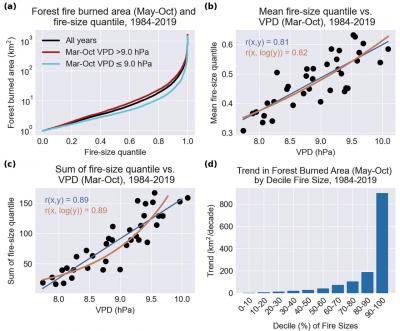Rapid Growth of Large Forest Fires Drives the Exponential Response of Annual Forest-Fire Area to Aridity in the Western United States
Researchers investigated the exponential annual forest area burned (AFAB)-aridity relationship in western US forests using a new 1984–2019 database of fire events and 2001–2020 satellite-based records of daily fire growth. While forest-fire frequency and duration grow linearly with aridity, the exponential AFAB-aridity relationship results from the exponential growth rates of individual fires. Larger fires generally have more potential for growth due to more extensive firelines.
Forces that promote fire growth, such as aridification, have more potent effects on larger fires. As aridity increases linearly, the potential for growth of large fires accelerates, leading to exponential increases in AFAB.
AFAB in the western United States (US) has increased as a positive exponential function of rising aridity in recent decades. This non-linear response has important implications for AFAB in a changing climate, yet the cause of the exponential AFAB-aridity relationship has not been given rigorous attention.

